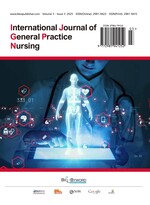Analysis of the Impact of Pre-hospital Emergency Rescue Mode on the Prognosis of Patients with Acute Heart Failure
Abstract
The emergency department is the first stop for inpatients in almost all departments of a hospital, and it treats patients with relatively critical conditions. Among them, acute heart failure is a relatively serious type of coronary heart disease, often caused by atherosclerosis. Acute heart failure requires initial diagnosis, initial treatment, and thrombolytic therapy in pre-hospital care. After a rapid assessment and emergency treatment of the patient’s condition, they are transferred to the cardiac care unit (CCU) for subsequent in-depth treatment. Patients with acute heart failure are very prone to situations such as death due to the condition during the transfer to the emergency department. If the treatment methods of medical staff are incorrect, the treatment is not timely, and the transfer operation efficiency is low during the pre-hospital rescue and transfer process, it will lead to the delay of the patient’s condition treatment.
References
Wang JL, Chen H, 2022, Observation on the Effect of Non-invasive Positive Pressure Mechanical Ventilation in the Treatment of Pre-hospital Emergency Patients with Acute Left Heart Failure. Modern Medicine and Health Research (Electronic Edition), 6(2): 60–62.
Yang LL, 2022, The Impact of Different Pre-hospital Emergency Treatment Methods on the Quality of Treatment for Acute Myocardial Infarction with Left Heart Failure. Contemporary Chinese Medicine, 29(1): 8–12.
Han Y, 2021, The Impact of Two Different Pre-hospital Emergency Rescue Models on the Emergency Rescue Effect and Prognosis of Acute Myocardial Infarction Complicated with Acute Left Heart Failure. Chinese Journal of Modern Pharmaceutical Application, 15(5): 45–47.
Liu ZJ, 2020, Evaluation of the Effect of Optimizing Pre-hospital Emergency Nursing Intervention for 80 Elderly Patients with Acute Myocardial Infarction. Sichuan Medicine, 41(3): 317–319.
Liu XK, Shen YH, 2023, The Influence of the Rescue Flowchart under the PDCA Cycle on the Quality of Pre-hospital Emergency Care and Treatment Outcome of Patients with Acute Myocardial Infarction. Cardiovascular Disease Prevention and Treatment Knowledge: Academic Edition, 13(33): 74–77.
Meng FD, 2020, Research on the Implementation of Pre-hospital Emergency Care for Patients with Acute Myocardial Infarction. Continuing Medical Education, 34(4): 97–99.
Teng W, 2020, Application Effect of Optimized Pre-hospital Emergency Nursing Measures by Chest Pain Center in the Treatment of Patients with Acute Myocardial Infarction. Contemporary Chinese Medicine, 29(26):170–173.
Xie JY, Li Z, 2022, Meta-analysis of the Impact of Pre-hospital Emergency Care on the Treatment and Prognosis of AMI Patients. Chinese Journal of Clinical Physicians (Electronic Edition), 16(9): 869–875.
Emergency Medicine Branch of China International Exchange and Promotion Association for Medical and Health Care, Emergency Medicine Branch of Chinese Medical Association, Emergency Physician Branch of Chinese Medical Doctor Association, et al., 2022, Chinese Emergency Management Guidelines for Acute Heart Failure (2022). Chinese Journal of Emergency Medicine, 31(8): 1016–1041.
Heart Failure Group, Cardiovascular Internal Medicine Physicians Branch, Chinese Medical Doctor Association, et al., 2021, Chinese Expert Consensus on the Clinical Application of Dopamine Drugs. Chinese Medical Journal, 101(20): 1503–1512.
Xu B, Chen CZ, Fang J, et al., 2021, The Influence of Pre-hospital Emergency Care Combined with Green Channel Mode on the Treatment Effect and Postoperative Adverse Cardiovascular Events of Patients Undergoing PPCI for Acute Myocardial Infarction. Advances in Modern Biomedicine, 21(10): 1908–1911.
Zhou WL, 2020, The Application of the Improved Early Warning Scoring System in Pre-hospital Emergency Care. Nursing Research, 34(10): 1851–1853.
Zheng RF, Jin S, Lin Y, et al., 2020, Application of Hierarchical Early Warning Mode in the Connection between Pre-hospital and In-hospital Emergency Care for Critically Ill Patients. Journal of Nursing of the People’s Liberation Army, 37(2): 79–82.
Kang Y, Mei L, Hu HY, et al., 2020, The Influence of Full-course Professional Psychological Care Case Management on the Rehabilitation and Quality of Life of Patients with Acute Myocardial Infarction. Chinese Clinical Research, 33(5): 716–718.
Chen KJ, Zhang MZ, Huo Y, 2014, Expert Consensus on Integrated Traditional Chinese and Western Medicine Diagnosis and Treatment of Acute Myocardial Infarction. Journal of Integrated Traditional Chinese and Western Medicine in Cardiovascular and Cerebrovascular Diseases, 2014(6): 641–645.
Liu QY, Zeng RF, Guo YF, et al., 2020, Analysis of the Predictive Value of the Modified Early Warning Score for the Intervention Measures and Outcomes Taken during the Transfer of Referred Patients. Chinese Journal of Emergency Medicine, 29(12): 1646–1648.
Wu ZG, 2021, Study on the Influence of Different Pre-hospital Emergency Treatment Methods on the Therapeutic Effect and Prognosis of Acute Myocardial Infarction Complicated with Acute Left Heart Failure. Special Health, 2021(24): 41.
Xiong ZZ, 2021, To Explore the Influence of Different Pre-hospital Emergency Rescue Methods on the Treatment Effect and Prognosis of Acute Myocardial Infarction Complicated with Acute Left Heart Failure. Chinese Community Physician, 37(19): 70–71.
Xi XL, 2021, Evaluation of the Therapeutic Effect and Prognostic Impact of Different Pre-hospital Emergency Treatment Methods on Acute Myocardial Infarction Complicated with Acute Left Heart Failure. Health and Wellness Guide, 2021(24): 120.
Dong JC, Zhang YM, Wang ZX, et al., 2020, Study on the Therapeutic Effect and Prognostic Impact of Different Pre-hospital Emergency Treatment Methods on Acute Myocardial Infarction Complicated with Acute Left Heart Failure. Hebei Medicine, 42(4): 554–557.
Jin ZJ, 2019, To Observe the Influence of Different pre-hospital Emergency Rescue Methods on the Treatment Effect and Prognosis of Acute Myocardial Infarction Complicated with Acute Left Heart Failure. Knowledge of Cardiovascular Disease Prevention and Treatment, 9(20): 42–44.

